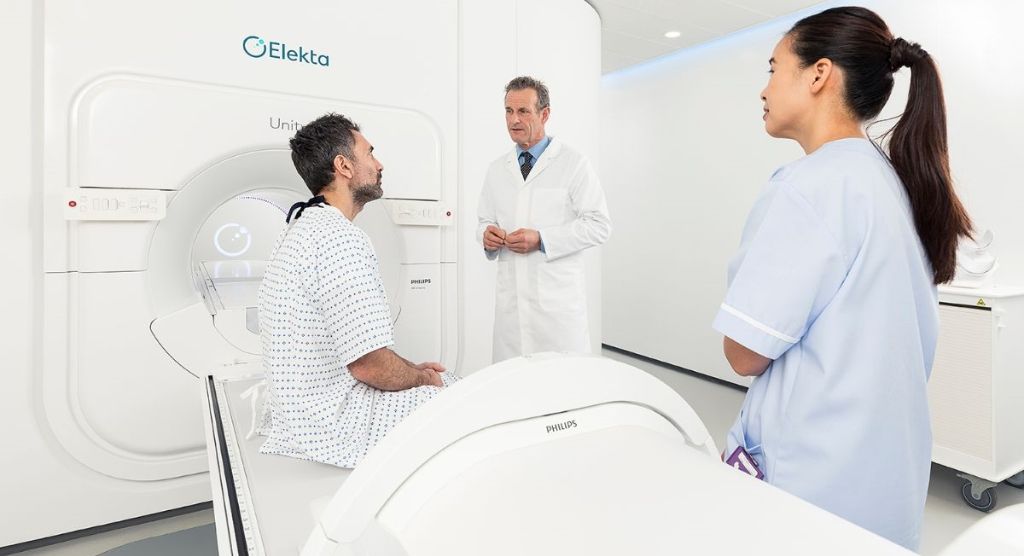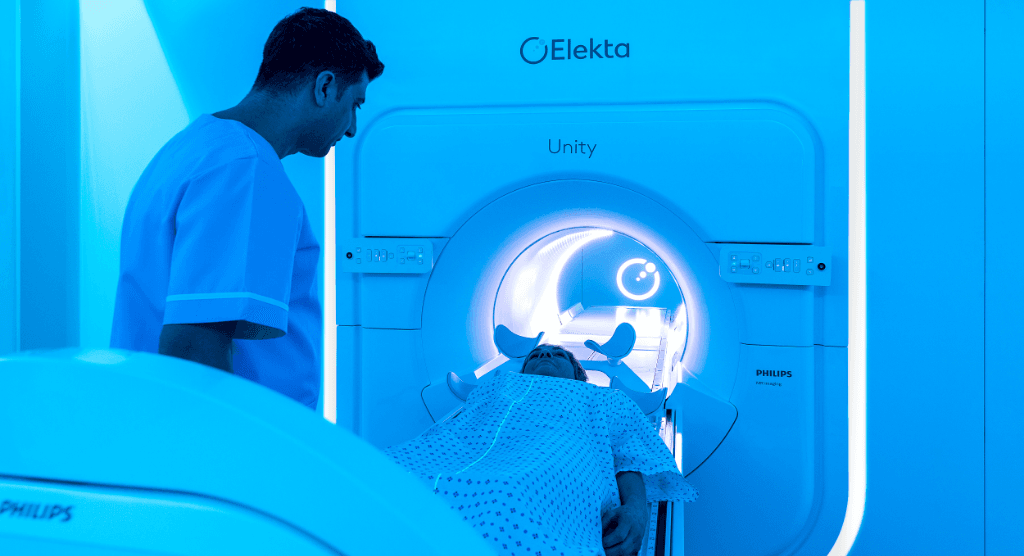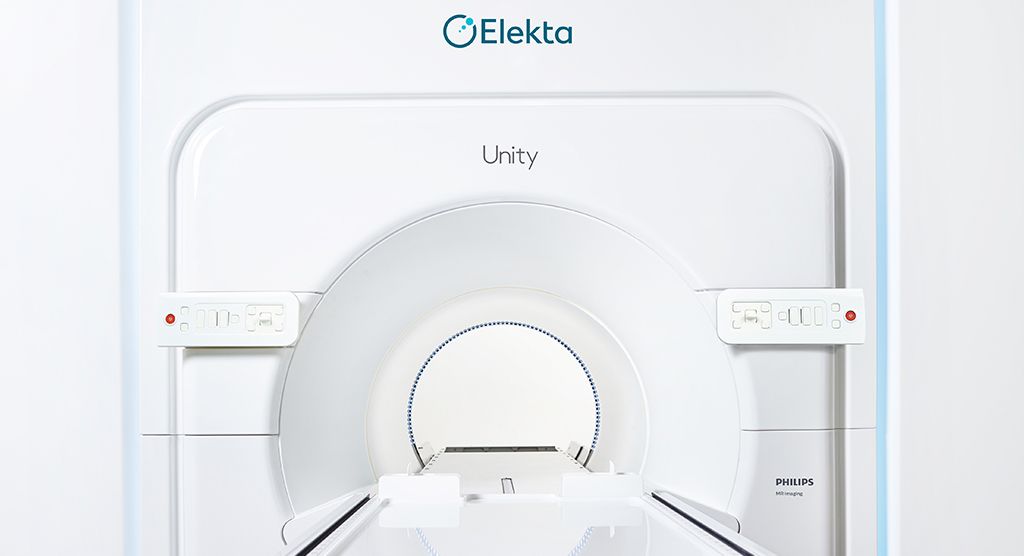Unlocking advanced radiation therapy techniques for Veterinary Radiation Therapy

Combination of Elekta solutions for beam shaping, imaging and patient positioning transforms animal RT at the University of Missouri Veterinary Health Center

The brand new Elekta linear accelerator installed at the University of Missouri Veterinary Health Center (VHC) in June 2020 replaced a fifteen-year-old machine. The capabilities of the new Elekta equipment, with state-of-the-art dynamic beam shaping and on-board cone-beam CT imaging, immediately opened up new possibilities for the treatment of animal cancers at the center.
“We felt like we jumped light years ahead with the new MLC,” comments Dr. Charles Maitz, chief of radiation oncology at the VHC. “We’ve been really impressed with the speed and precision of our new system, combined with the quality of the plans that can be achieved with Monaco. This has given us the capability and confidence to implement advanced techniques, such as VMAT and stereotactic protocols.”
Fewer side effects
The high-resolution beam shaping of the Agility™ MLC combined with the advanced dose modulation capabilities of Monaco® treatment planning system allow accurate dose placement and sharp dose fall-off (figure 1).
“The accuracy and sharp dose fall-off that can be achieved with this new equipment is critical for such small tumors.”

“We frequently need to treat very small tumors,” Dr. Maitz explains. “A pituitary tumor in a cat, for example, might be just 8 mm in size and the optic chiasm is extremely close because of the small size of the animal. The accuracy and sharp dose fall-off that can be achieved with this new equipment is critical for such small tumors.”
“Treatment accuracy and normal tissue sparing benefits patients by causing fewer treatment-related side effects,” he continues.
Accurate setup
The application of stereotactic radiation therapy is a growing trend in veterinary medicine, offering many of the clinical benefits that are also seen in human patients. When delivering higher doses in fewer fractions, accurate and reproducible patient setup is essential. This is now much easier at the University of Missouri VHC with the new on-board kV imaging and 6D robotic couch, which provide sub-millimeter repositioning accuracy (figure 2).
“We went from relying on MV films to onboard kV CBCT imaging, which was a huge leap for us and has certainly enhanced the accuracy of our treatments,” says Dr. Maitz. “In the past, we had to keep checking and moving the table a few millimeters in this or that direction. Now, following image registration, the fully integrated system automatically moves the table to reposition the patient with extreme precision.”

“We use a Vac-Lok™ system for positioning and, traditionally, we used bite blocks to reduce rotational errors,” he continues. “But some animals are not amenable to a bite block. Now, with the ability to make both translational and rotational corrections, we get very good target alignment, eliminating the need for a bite block in most cases.”
The hypofractionated schedules required for stereotactic treatments are especially beneficial to animals, reducing the course of treatment and the number of times they need to be anesthetized.
“Improved outcomes are certainly important,” says Dr. Maitz, “but quality of life is also a prime consideration in veterinary medicine. Since we are a regional center, many of the animals we treat may need to spend time away from home for the course of their treatment. With conventional radiation therapy that could take 4-5 weeks, which is a long time for pets to be away from their families. Stereotactic treatments, on the other hand, can be completed in a week. Having this option enhances our flexibility to provide treatments that work best for both pets and owners.”
Faster treatments and increased capacity
More efficient imaging, setup and treatment deliveries have allowed the VHC team to reduce complex treatment slots by 50 percent, enabling them to increase their capacity significantly
“We can now treat complex cases in half the time, reducing treatment slots for such cases to just 30 minutes,” Dr. Maitz explains. “This has allowed us to shorten anesthesia time by approximately 20 minutes, which is better for the animals.”
“We can now treat complex cases in half the time, reducing treatment slots for such cases to just 30 minutes.”
“We have also increased our potential daily capacity to 20 cases, which gives us room for continued growth,” he “We have also increased our potential daily capacity to 20 cases, which gives us room for continued growth,” he continues. “In addition, stereotactic protocols have allowed us to treat more cases annually due to the shorter course of treatments.”
The center is seeing a growing and changing radiation therapy caseload. In the past, they treated 2-3 cases per day, which were mainly incompletely excised soft tissue sarcomas. Now they treat 6-8 cases per day and are seeing a much wider spectrum of indications, including head and neck tumors in dogs and cats, such as nasal carcinomas and oral melanomas.
“With the new equipment and software, our workflows are more seamless and efficient. Plan importation is noticeably faster, and we have fewer manual tasks.”
“With the enhanced capabilities that we now have, our hope is to gain funding to expand our center’s clinical trials program,” he concludes. “This will allow us to offer the latest, cutting-edge techniques to more animals, while we continue to advance the field of radiation oncology in general.”
*Elekta linacs and Monaco are safe and effective for veterinary use. Veterinary regulations vary in countries so please contact an Elekta Representative for the device availability.
LWBINF220613





